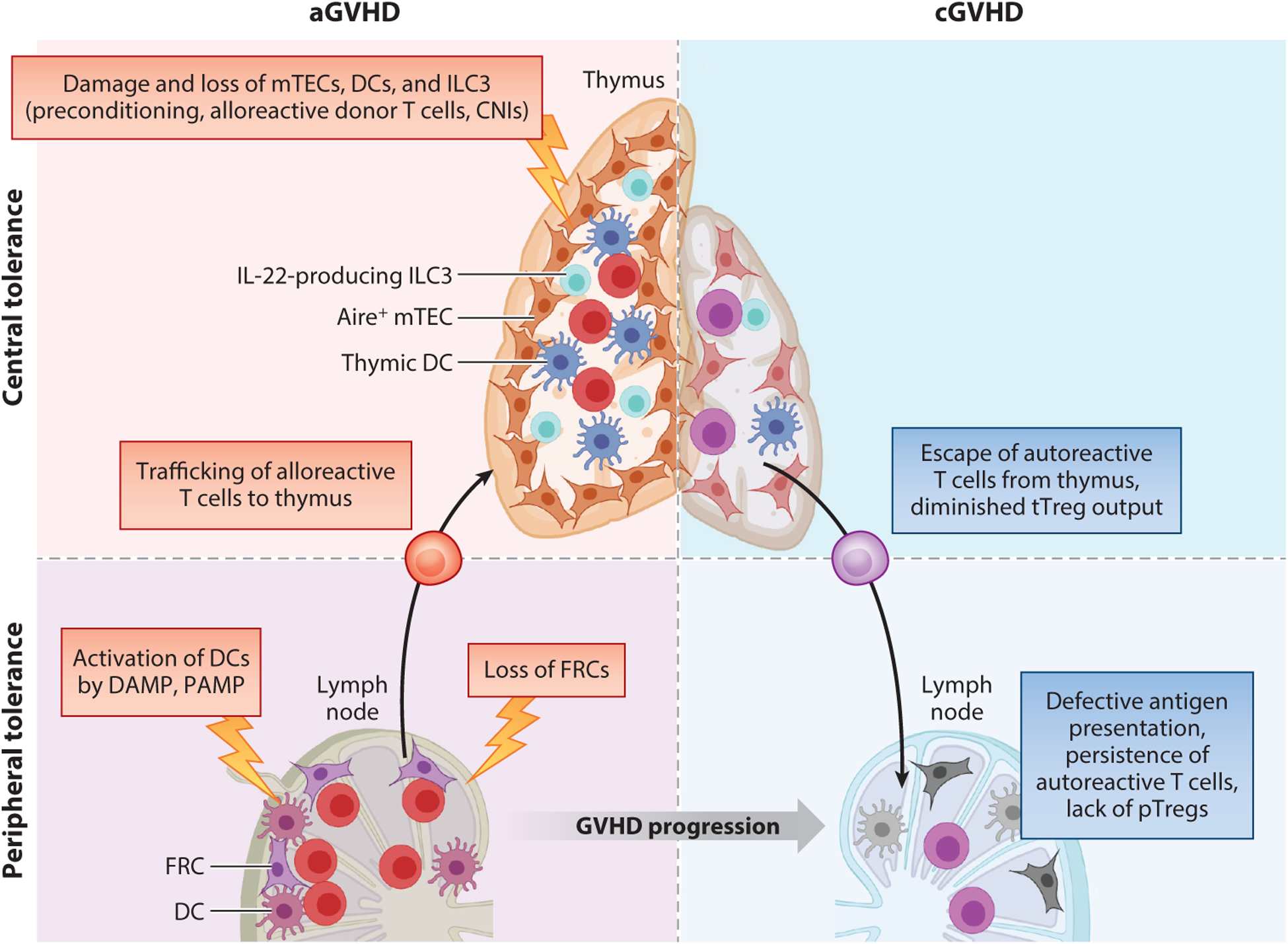Figure 3.

Failure of immune tolerance during GVHD. During acute GVHD (aGVHD) damage-associated molecular pattern (DAMP)/pathogen-associated molecular pattern (PAMP)-induced activation of host antigen-presenting cells (APCs) in secondary lymphoid organs (SLOs) results in switch from donor T cell anergy to activation and dysfunction or deletion of fibroblastic reticular cells (FRCs) and donor dendritic cells (DCs). Donor alloreactive T cells infiltrate the thymus, exerting cytotoxicity of thymic DCs, Aire-expressing medullar thymic epithelial cells (mTECs), and thymus type 3 innate lymphoid cells (ILC3s) that are already damaged by both the conditioning regimen and use of calcineurin inhibitors (CNIs). Thymic damage results in impaired negative selection, allowing escape of self-reactive T cell clones, and diminished thymic regulatory T cell (Treg) generation. Potentially self-reactive T cell clones escaping to the periphery fail to undergo peripheral tolerance in SLOs because of impaired antigen presentation on DCs and FRCs damaged during aGVHD. The outcome of impaired thymus function is the persistence of self-reactive lymphocytes. These defects in APCs within SLOs also impede peripheral Treg (pTreg) generation, causing profound Treg defects. Altogether, these mechanisms contribute to the failure of central and peripheral immune tolerance. Abbreviations: cGVHD, chronic GVHD; tTreg, thymic Treg. Figure adapted from images created with BioRender.com.
